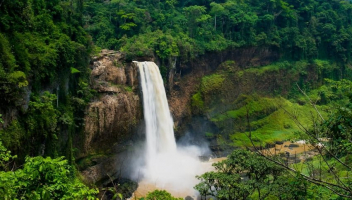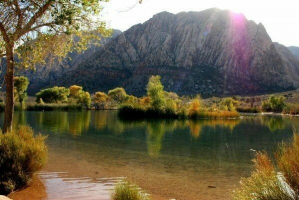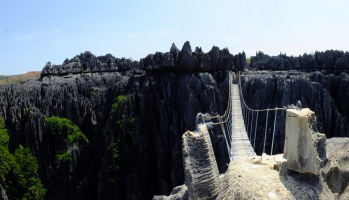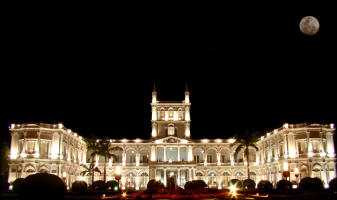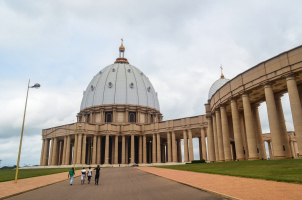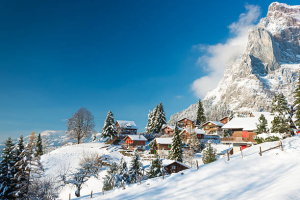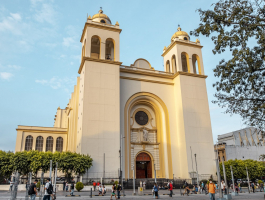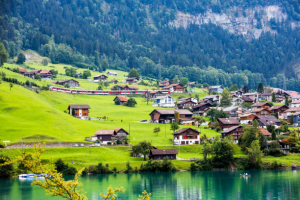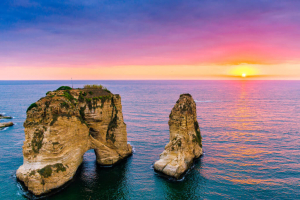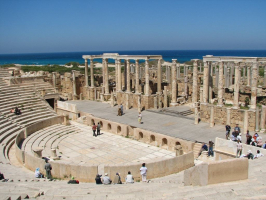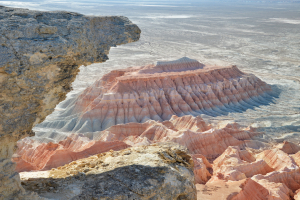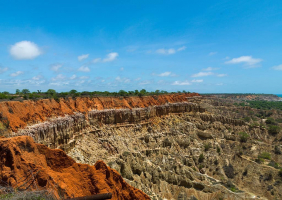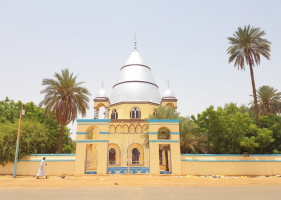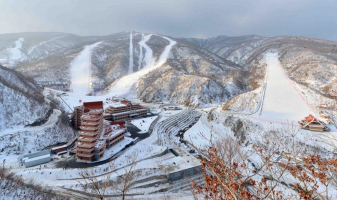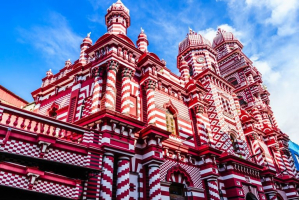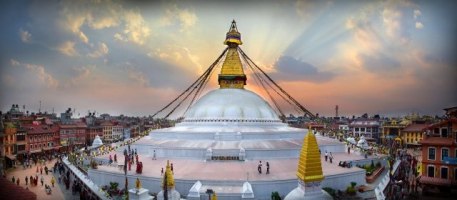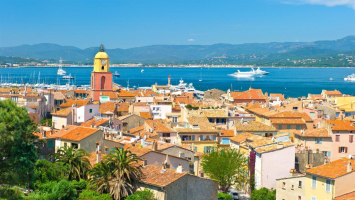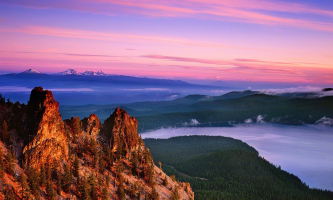Top 12 Best Places to Visit in Bucharest
Bucharest, Romania's capital, was once known as "Little Paris" for its elegant architecture, and it has a storied history that blends with its modern identity. ... read more...Explore Bucharest's sprawling city parks, admire the works of art and exhibits at its excellent museums, and get lost in the gritty yet charming lanes that weave through the Old Town. Exploring Bucharest means learning about a complex past that is giving way to the city's modern sensibility as a thriving European capital. With our list of the best places to visit in Bucharest, you can discover this dynamic city.
-
This magnificent building on Strada Lipscani houses Bucharest's most impressive bookshop. The building, which dates from the late 1800s, housed a department store during the communist era before falling into disrepair for nearly a quarter-century before reopening a few years ago after a lengthy renovation. And what a renovation! Carturesti's team of architects has brought the building back to life, and it is so impressive that even if you aren't looking for books, you should go take a look. It's also possibly the only shop in Bucharest where taking photos isn't frowned upon; in fact, it's encouraged. Aside from the tens of thousands of books and gifts for sale, there is a gallery and exhibition space, as well as a rather good bistro on the top floor serving fresh, tasty food with plenty of options for vegetarians.
Its design is impressively minimal, playing with the light that filters through a central skylight to create an atmosphere reminiscent of a moving carousel, hence the name "Carousel of Light." The bookshop serves as a community gathering place, not only for reading and browsing through books but also for art and relaxation. Carturesti Carusel is also popular for its changing contemporary art exhibits, media center presentations, and inviting top-floor bistro café. This is considered one of the best places to visit in Bucharest.
Google rating: 4.8/5
Address: Strada Lipscani 55, București 030033, Romania
Phone: +40 728 828 922
Website: http://carturesti.ro/
Youtube Channel: Shape of Times 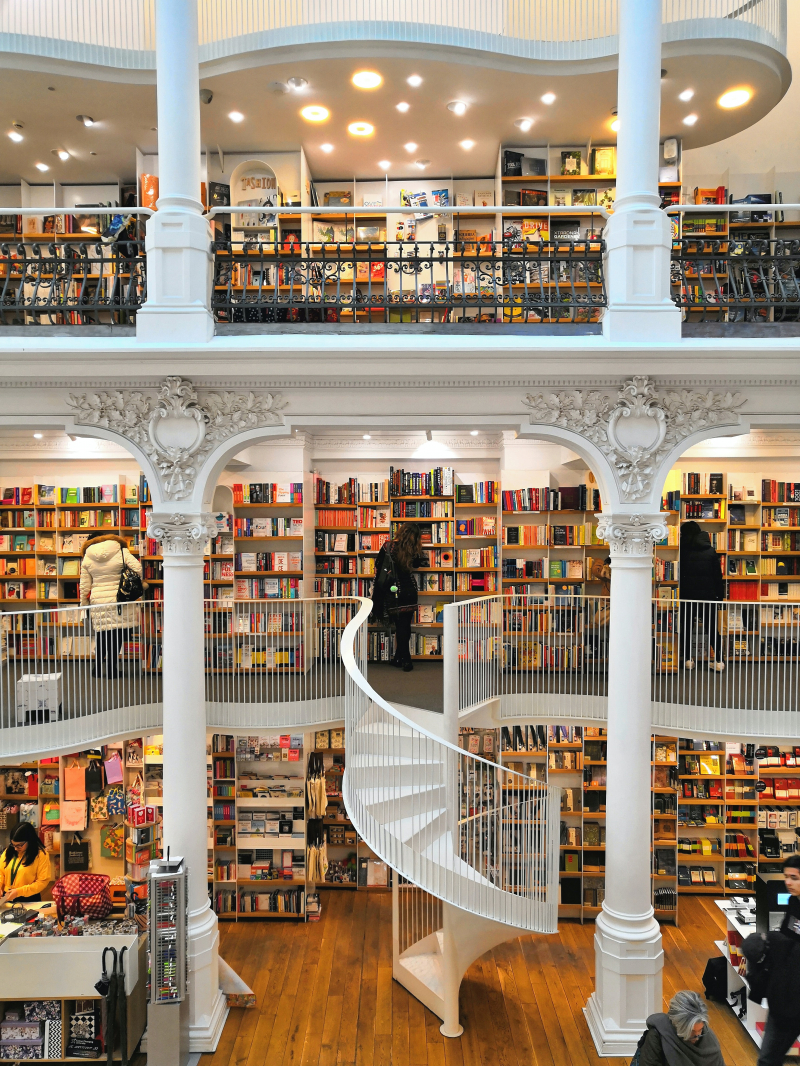
Image by Ondrej Bocek via unsplash.com -
The Romanian Athenaeum is a concert hall in the center of Bucharest and a landmark of the Romanian capital city. This building was one of the reasons why Bucharest received the nickname "Little Paris." The Romanian Athenaeum was built between 1886 and 1888 to house the specific activities of the Romanian Philharmonic Society, as it was known at the time (an institution founded in 1868). The interior of the athenaeum (the concert hall) has a capacity of nearly 800 seats under a dome measuring 16 meters in height and 28.5 meters in diameter. The Romanian Athenaeum was designed by French architect Albert Galleron in collaboration with Romanians Grigore Cerchez, Constantin Olanescu, Ion Mincu, and Ion Gr. Cantacuzino. The building's style is neoclassical, but it also incorporates elements of eclecticism and 19th-century French architecture.
If the Athenian's primary function is that of a concert hall, it also serves a symbolic function, representing the greatness of Romanian cultural heritage and evoking the glorious past of some significant historical figures. The names and representations of the era's memorable personalities, as well as the names of the arts and scientific fields, can be found both inside and outside the hall. The mosaic portraits of five rulers are displayed beneath the triangular pediment, which is supported by six majestic ionic columns: Neagoe Basarab, Alexandru cel Bun, Vasile Lupu, Carol I, and Matei Basarab. The golden mosaic recalls the country's Byzantine heritage and suggests a true dynastic figure cult. The Philharmonic has held concerts there continuously since 1888, but the Athenaeum has also hosted conferences, painting exhibitions, and symposiums.
Google rating: 4.8/5
Address: 1, Strada Benjamin Franklin 1-3, București 030167, Romania
Phone: +40 21 315 2567Website: http://fge.org.ro/
Youtube Channel: CMGoods Travels 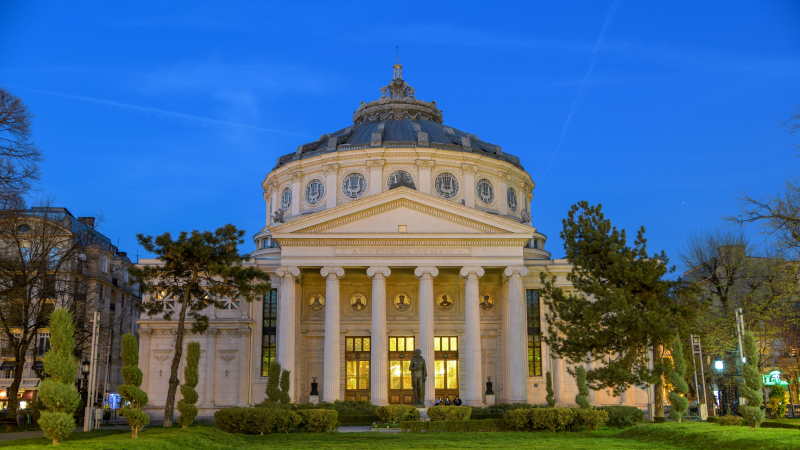
Image by Aidan Joyce via unsplash.com -
When it comes to the best places to visit in Bucharest, can't help but mention Stavropoleos Church. The Stavropoleos Church was built in the Brâncoveanu architectural style and is known for its ornate façade with patterned frescoes. Admire the intricately carved wooden doors, carved stone columns, and tiled domes atop the exterior's small towers. Step inside to be dazzled by the interior's frescoes and gilded icons. Don't miss the courtyard full of ancient tombs and the library, which houses Romania's largest collection of rare Byzantine musical scores. Byzantine music recitals and concerts are held here on a regular basis.
A number of sightseeing tours include Stavropoleos Church. Many Old Town walking and bike tours include a stop here, as well as nearby attractions like Manuc's Inn, Lipscani Street, and the Old Princely Court. Opt for a full-day Bucharest sightseeing tour and also see top attractions like the Palace of Parliament and the Village Museum. Several frescoes and wood icons can be found inside. The church complex once housed an inn and a monastery, both of which were demolished. The church itself has been restored several times following earthquake damage, and it is notable for its unique library, which houses a large collection of books related to Byzantine music. Check the church's websites for information on concerts and other events that are open to the public.
Google rating: 4.7/5
Address: Strada Stavropoleos 4, București 030167, Romania
Phone: +40 21 313 4747
Website: https://www.stavropoleos.ro/Youtube Channel: McDAGOS 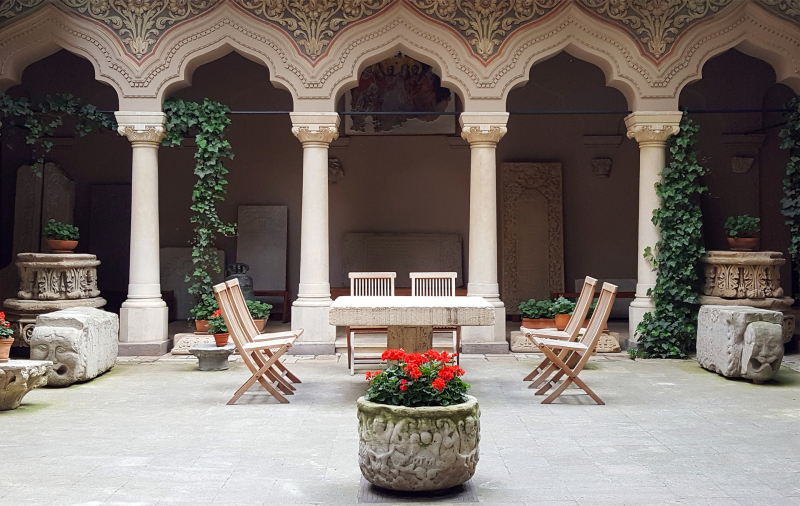
Image by V S via pixabay.com -
The National Museum of Art of Romania (Muzeul National de Arta al României), located in the former Royal Palace, is the country's leading art museum and home to the world's most comprehensive collection of Romanian art, including medieval and modern art. The museum, which opened in 1948, also houses the Royal Collection, which includes Romanian and European art dating back to the 15th century. The various halls house over 100,000 works, including paintings by the country's most celebrated artists, Theodor Aman, Nicolae Grigorescu, and Gheorghe Tattarescu.
Sculptures by Milita Petrascu and Dimitrie Paciurea are included in the modern Romanian collection. One room is dedicated to Constantin Brancusi, one of the twentieth century's most influential sculptors. The European Gallery, which is right next door, has 15 rooms with works by El Greco, Monet, Rembrandt, Renoir, and Rubens.
The National Museum of Art of Romania is a Bucharest art museum located in the Royal Palace on Revolution Square. The museum houses collections of medieval and modern Romanian art, as well as international art pieces collected by Romania's royal family. The museum is divided into three galleries: the European Art Gallery (which houses Romania's premier European art collection), the Romanian Medieval Art Gallery (which houses over 900 icons, mural paintings, embroideries, manuscripts, silverware, and woodcarvings), and the Romanian Modern Art Gallery (where the story is told of Romanian art from the mid-nineteenth to the late twentieth century).
Google rating: 4.6/5
Address: Calea Victoriei 49-53, București 010063, Romania
Phone: +40 21 313 3030
Website: http://www.mnar.arts.ro/Youtube Channel: Valahia News 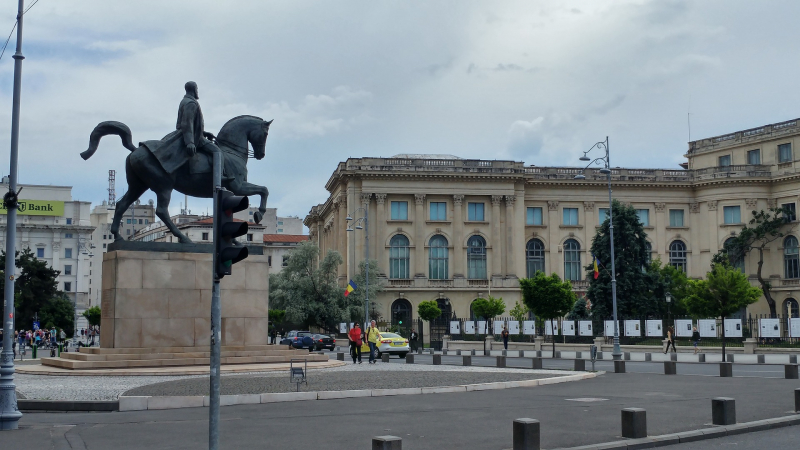
Image by Gal Shenkar via pixabay.com -
The Arc de Triomphe in Bucharest was built in 1922 to honor Romania's World War I dead. The original Arc was made of wood, and the current, Petru Antonescu-designed concrete structure was built only in 1935. The Arc, which stands 25 meters tall, has a staircase that allows visitors to climb to the terrace at the top of the monument, though it is oddly closed most of the time and only opens on special occasions (usually on national holidays). The monument's sculptures and reliefs were created by leading artists of the time, including Ion Jalea, Constantine Medrea, and Constantine Baraschi.
Recently restored in a botched job, some of the stonework has been de-colored, and the Arc now has an unappealing two-tone appearance. Furthermore, there is still no way to get there without risking your life by crossing one of the city's busiest roundabouts. It still serves the purpose of being the focal point for military parades to this day. Romanian soldiers march beneath it for major events, such as the country's national holiday on December 1st. This is one of the best places to visit in Bucharest.
Google rating: 4.6/5
Address: Piața Arcul de Triumf, București 011453, Romania
Phone: +40 21 318 3767
Website: https://www.monumentfor.ro/
Youtube Channel: Some1tube 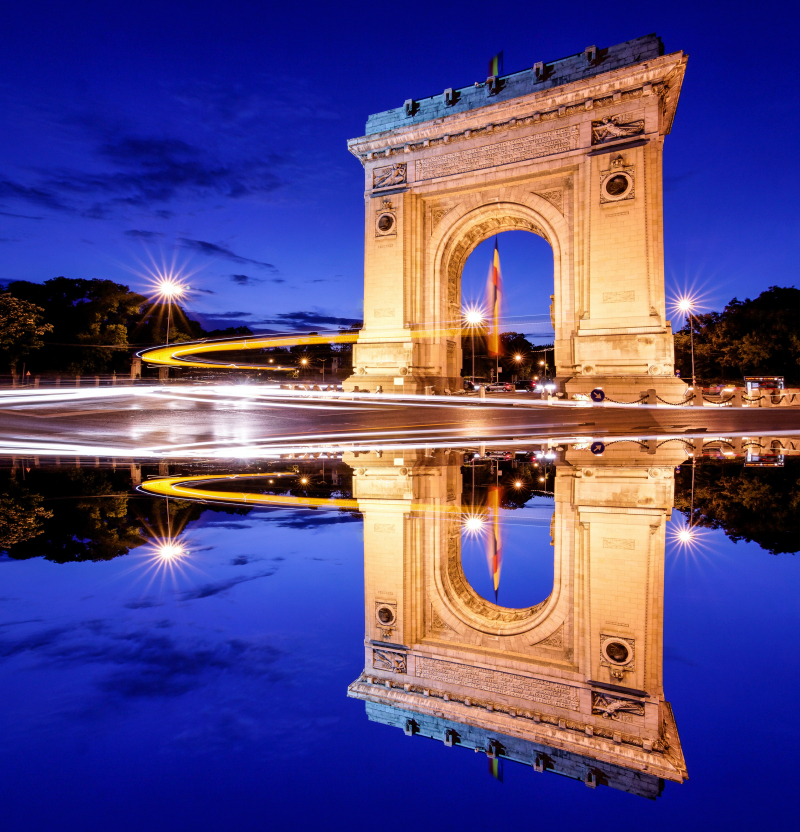
Image by CALIN STAN via unsplash.com -
Among the best places to visit in Bucharest, the Village Museum is one of them. The Bucharest Village Museum is vibrant, and walking around makes you feel as if you're in a real village. This is part of its allure, and it draws visitors in.
One of the most valuable aspects is its sociological perspective, as it was originally designed to depict rural life in the most realistic way possible. To accomplish this, the old owners first moved into the houses here, along with their loved ones and animals, becoming a part of the museum itself. Sculptures by Milita Petrascu and Dimitrie Paciurea are included in the modern Romanian collection. One room is dedicated to Constantin Brancusi, one of the twentieth century's most influential sculptors. The European Gallery, which is right next door, has 15 rooms with works by El Greco, Monet, Rembrandt, Renoir, and Rubens.
Visitors can wander through 300 traditional buildings, including peasant homes with steep roofs, thatched barns, heavy log cabins, various types of churches, workshops, and mills that have been transported from towns throughout Romania. Each structure was carefully dismantled, shipped to the museum, and rebuilt to be part of the park's walkable village-like setting. The Village Museum also displays artifacts, pottery, and other traditional items from across the country.
Google rating: 4.6/5
Address: Şoseaua Pavel D. Kiseleff 28-30, București 011347, Romania
Phone: +40 21 317 9103
Website: http://muzeul-satului.ro/
Youtube Channel: Le Monde en Vidéo 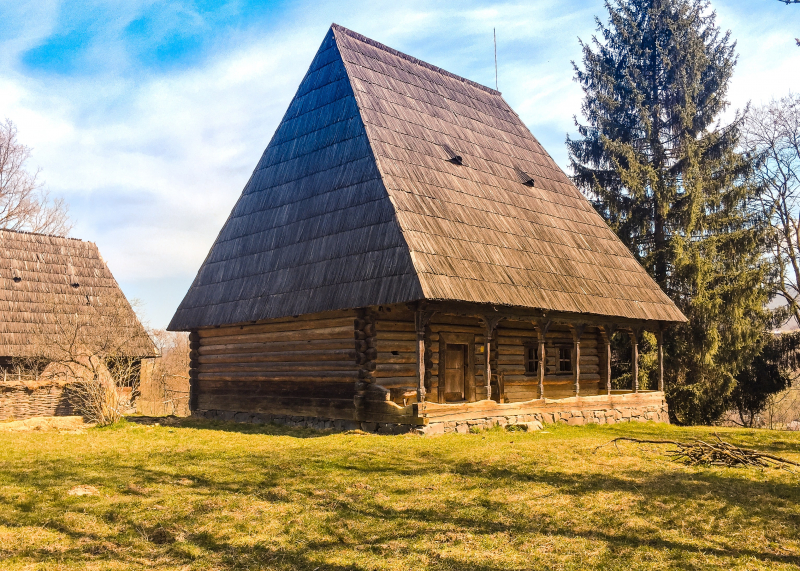
Image by Robert Anitei via unsplash.com -
The Palace of Parliament is one of the most interesting tourist attractions in Bucharest. No matter how many palaces you've seen in your life, the size and architectural style of this grand edifice will take your breath away. Did people mention "architectural style"? In fact, most architects blame this palace for combining multiple architectural styles into one. It is the world's second-largest administrative building (after the Pentagon), an architectural behemoth that is also the world's heaviest building.
It was originally called the People's House by its visionary, the dictator Nicolae Ceausescu, who used it as his family's residence and as the seat of his government. It has more than 3,000 rooms spread across 330,000 square meters and was built with marble and steel. Ceausescu finished it by razing places of worship, workshops, factories, parks, a portion of the Old Town, and entire neighborhoods. Over a 13-year period, from 1985 to 1997, more than 20,000 workers and 700 architects worked on the opulent Neoclassical-style palace, during which time the majority of Romanians faced poverty.
Although it is still unfinished, a small portion houses Romania's parliamentary headquarters as well as the National Museum of Contemporary Art. Scheduled tours bring visitors up close to the vastness, kitsch, and extravagant luxury Ceausescu would have continued to enjoy had he not been deposed in a coup.Google rating: 4.5/5
Address: Strada Izvor 2-4, București, Romania
Phone: +40 21 316 0300
Website: http://www.cdep.ro/
Youtube Channel: JayWay Travel 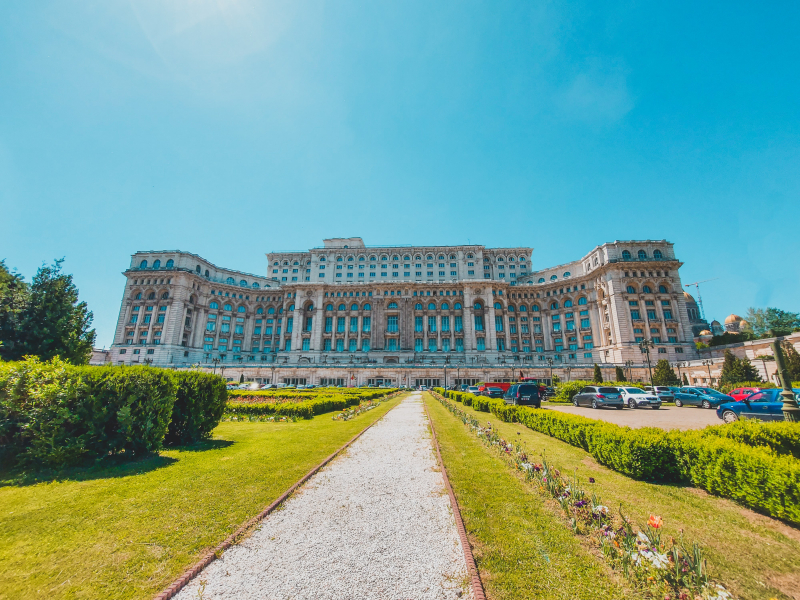
Image by Árpád Czapp via unsplash.com -
The National Museum of Romanian History (Muzeul National de Istorie a României) is housed in a beautiful neoclassical structure that was originally constructed for the Romanian postal service. Since 1970, the museum's 60 rooms have housed the most intriguing historical exhibits from prehistoric to modern times. The largest permanent exhibit is a massive replica of Trajan's Column, built in honor of the conquering Roman emperor Trajan, who defeated Romania's ancient Dacian tribes in the second century.
Thousands of gold items and Neolithic artifacts, including Geto-Dacian jewelry, can be found in the Romanian Treasury. The Romanian Crown Jewels are on permanent display, including stunning emerald pieces made for Queen Marie, the wife of Romanian King Ferdinand. Gold artifacts from the 4th-century Pietroasele Treasures are also on display. Prior to the discovery of Tutankhamun's tomb, it was thought to be the most valuable treasure collection in the world.
The Grigore Antipa National Museum of Natural History (Muzeul National de Istorie Naturală Grigore Antipa), also known as the Antipa Museum, should be on your list of Bucharest attractions. It was recently renovated and now houses everything from interactive exhibits to traditional displays of animal species from all over the world.
Google rating: 4.4/5
Address: Calea Victoriei 12, București 030026, Romania
Phone: +40 21 315 8207
Website: https://www.mnir.ro/
Youtube Channel: VideoHistoryToday 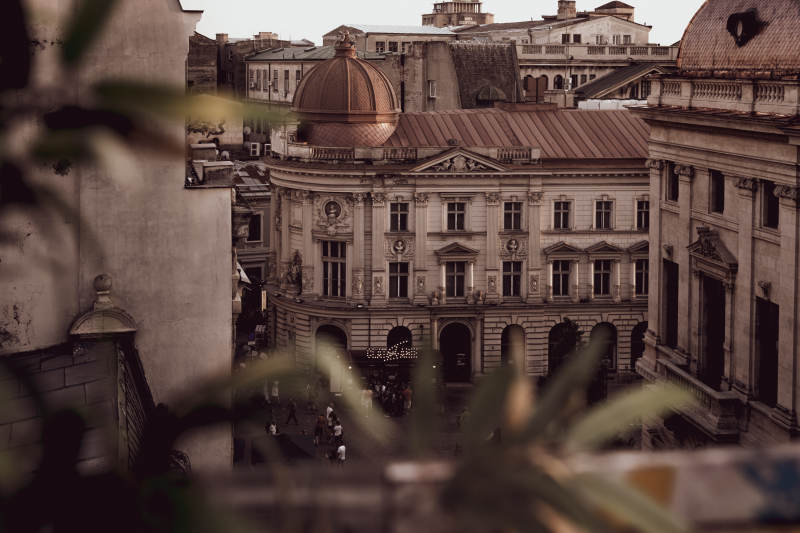
Image by Hari Nandakumar via unsplash.com -
Bucharest is surrounded by beautiful parks, which are popular with locals all year. Cismigiu Gardens, designed in the mid-nineteenth century, is the city's oldest park. Renting rowboats is one of the most popular summer activities, and the ice rink is popular in the winter. Carl Meyer, a German landscape architect, designed the park, which opened in 1860, bringing in 30,000 trees and plants from the Romanian mountains as well as greenery from Vienna's botanical gardens.
The Dimitrie Gusti National Village Museum, an open-air theater, a sports club, and an old-fashioned amusement park are all located on 400 acres of King Michael I Park. Every summer, the public can rent boats from the lake. The elite of Bucharest lives in 19th- and 20th-century villas bordering the park.
Carol Park, designed by French landscape artist Eduard Redont and completed in 1906, is regarded as one of the most beautiful parks in the capital. Romania's Tomb of the Unknown Soldier is located here, as is a Roman-era-styled open-air theater called Arenele Romane, which is popular for summer concerts.The Bucharest Botanical Garden (Gradina Botanica din Bucuresti) was founded in 1860 and is also worth visiting. It covers 17 hectares and contains over 10,000 different plant species. Its numerous greenhouses, an informative museum, and plenty of flower beds are highlights.
Google rating: 4.3/5
Address: Bulevardul Regina Elisabeta, București 030167, Romania
Phone: +40 21 224 5860
Youtube Channel: La Pas 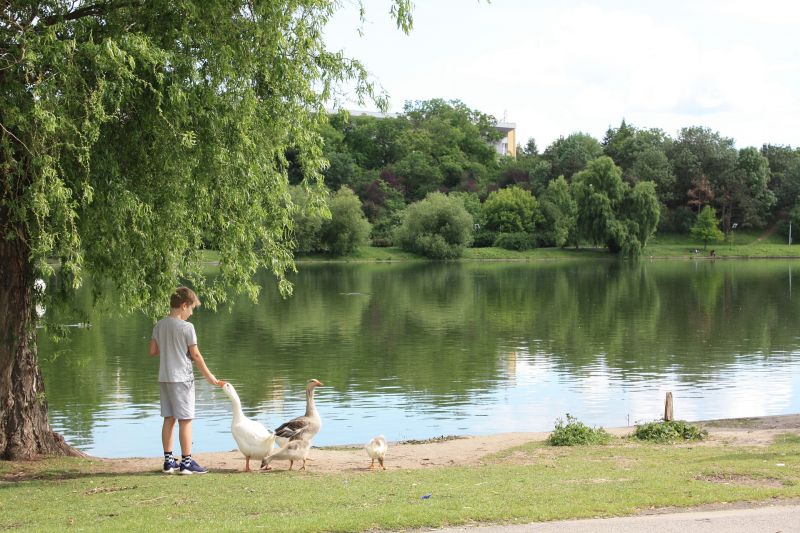
Image by Mariana Bobocea via pixabay.com -
Vlad the Impaler's former court at Curtea Veche, now an open-air museum of excavated medieval ruins, and the National Museum of Romanian History, housed in a former palace, are both located in Bucharest's grand Old Town. Local wines and beaded jewelry are sold in shops, and traditional dishes are served in elegant restaurants housed in 19th-century buildings. After dark, crowds flock to buzzing pubs and discos.
The Old Town of Bucharest is one of the city's oldest settlements, with structures dating back to the 15th and 16th centuries. Over the centuries, it has served as the seat of Romanian princes, a trade center, a place of worship, and a crossroads for travelers. It also survived Ceausescu's razing of one-fifth of the city in the 1980s to build his vision of a new socialist capital. After decades as a slum, much of the Old Town has been gentrified and renovated since communism's demise.
While many historic buildings have been admirably restored, others are still in need of a facelift. This contrast adds to the Old Town's pedestrian lanes and cobblestone streets lined with bookstores, theaters, restaurants, and cafés. Visit Curtea Veche, an open-air museum built on the site of the Old Princely Court, which was once home to Vlad the Impaler, and the National Museum of Romanian History, which houses fine collections of religious and royal treasures.
Google rating: 4.2/5
Location: the center of Bucharest, Romania
Open: 24 hours
Youtube Channel: Jen and Stevo ~ Two Can Travel 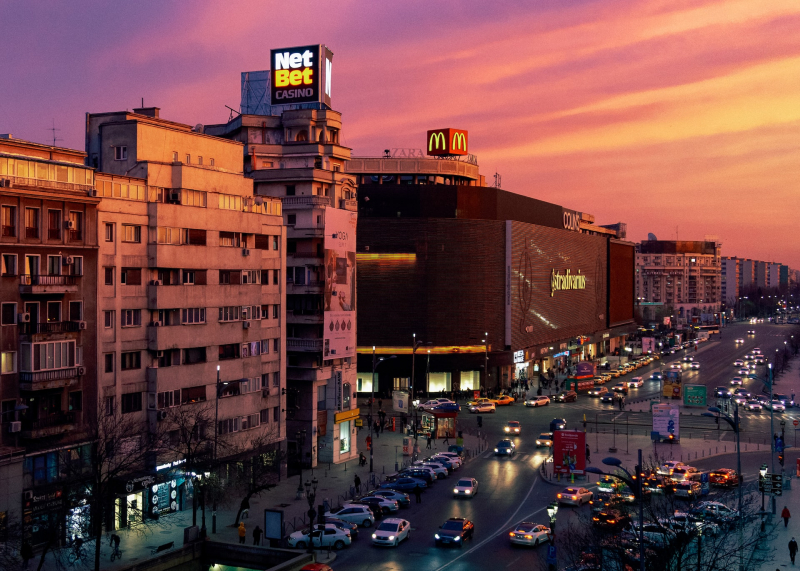
Image by Dan V via unsplash.com -
The Revolution Square in Bucharest has a complex history and is a landmark of local and national culture and history. This is where the 1989 revolution began. The statues that surround the square depict scenes from Bucharest's communist era. Around the square are the former communist party headquarters, a fascinating building with an old facade and a modern interior—a former conspiratorial house and now the headquarters of the Order of Architects in Romania. The statue of Iuliu Maniu stands in the center of the square. The Kretzulescu Church is located directly across from the former Communist Party headquarters.
What should be remembered is that Revolution Square is a tourist destination that should not be overlooked because, as previously stated, it represents the cultural and historical identity of Bucharest and the entire country. The Revolution Square is also an excellent starting point for those who want to take a comprehensive tour of Bucharest, as it is located on Calea Victoriei, just a short distance from, for example, Cişmigiu Park (which is located about 200 meters west of the market).
Google rating: 4.1/5
Address: Calea Victoriei Boulevard, Bucharest
Open: 24 hours
Youtube Channel: Vic Stefanu - Amazing World Videos 
Image by Pelayo Arbués via unsplash.com -
Curtea Veche (Old Princely Court) is one of the most interesting sites in Bucharest's center. The site contains the ruins of Bucharest's former royal residence, which was destroyed by fire in 1718 and an earthquake in 1738. There are numerous theories about who built the court, with some experts concluding that it was built for Mircea the Elder. According to research, he ordered the construction of a fortress between the 14th and 15th centuries, which was later upgraded by Vlad the Impaler. The city and shops were located around the fortress at the time, which explains its significance in the city's history. Following the events of the 18th century, a new court was built nearby, and the site was given its current name.
After Vlad, the Impaler's rule, a 16th-century prince, Mircea Ciobanul, repaired the palace and established the surrounding Lipscani area as Bucharest's trading core by establishing a community of skilled craftsmen. Ciobanul built the Old Princely Court Church next to the palace in 1559. It was the place where succeeding Romanian princes were coronated for the next two centuries. The Old Court Museum, which houses pottery and artifacts discovered during an archaeological dig around the ruins, is also worth a visit.
Google rating: 4.1/5
Address: Strada Franceza 25-31, Bucharest
Open: 8 AM–7 PM
Youtube Channel: hirudov 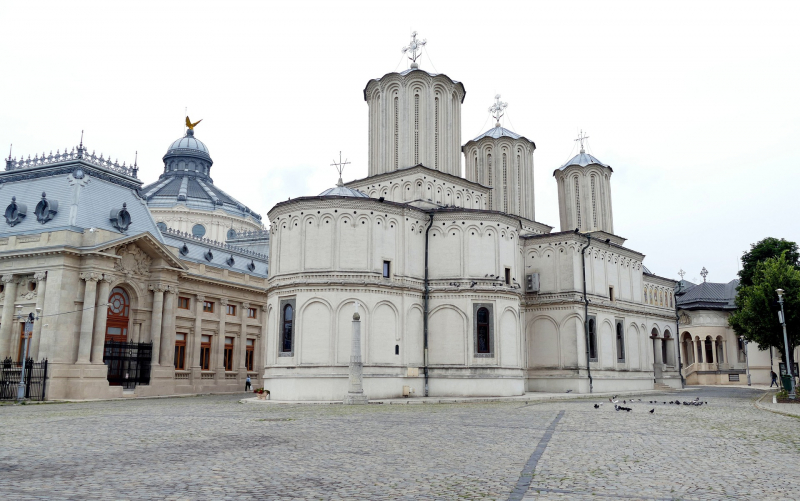
Image by falco via pixabay.com














